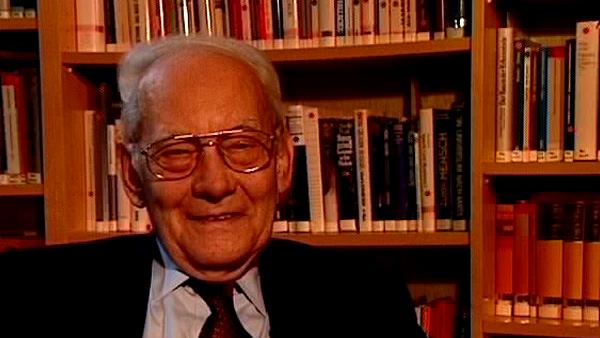That's one thing, to pick up single molecules, that's fine, but if there are other molecules around...
[Q] If you want to look at the virus in the blood.
If you want to not only see single molecules but also seeing low concentrations. We will come to the virus later. I want to see a single virus particle in a millilitre of blood, or when I divide my thing it's only a few microlitre, and I want to see that... that particle. How can I do this? Well, a virus is a nucleic acid. The genome of a virus is... the AIDS virus is an RNA molecule. So, I can make a primer. I have already said what a primer is... it's a sequence, let's say of twenty nucleotides... twenty monomers, which is complementary to a part of the sequence you are looking for, and since the AIDS virus sequences are known we can easily make such primers towards certain parts of the AIDS RNA... of the HIV RNA. So, those primers we can couple with the fluorescing group. In other words we put on a dye, a fluorescing dye. Now, there comes a problem. It turns out that you need at least a certain number of these primers for them to bind to the target... for those who know concentration values it's about nanomolar, 10-9 molar. If you go below with your primer concentration it wouldn't bind any more. Why not? Because the nucleic acid is folded, and it has to unfold in order to let the primer completely bind to it; and that folding is a internal first order reaction, the binding is a second order reaction combination with the molecule, and that needs a certain concentration to compete.
But what I want to do is I want to see a concentration much lower than 10-9 molar, I want to see a single virus particle. One virus particle per millilitre, well one virus particle per litre is about 10-24 molar, per millilitre is about 10-20, 10-21 molar, or one per microlitre is 10-18 molar. So I want to see when I divide my sample into microlitre probes into which I focus my laser light, I could see in fact concentrations as low as 10-18 molar, but they are a billion times as large as the primer concentration, and the primer of course contains a dye and fluorescence too.
So there are ways you have to use electric fields, you have to trap the molecule, you have to use different charges for the primer and the large molecule, there are now new polymers which are complementary which are called PNA. They are like are like RNA but have a peptide backbone which is not negatively charged. So you have to use all those tricks now to manipulate the single molecule in order to get them where you want to measure them. And that's a method which has been worked out, so that I can say nowadays we can use nanotechnology... we can manufacture technical devices in the range of micron... micrometre... where we can try to manipulate molecules using electric fields to carry them through and use laser beams which are focused into such a small area.






